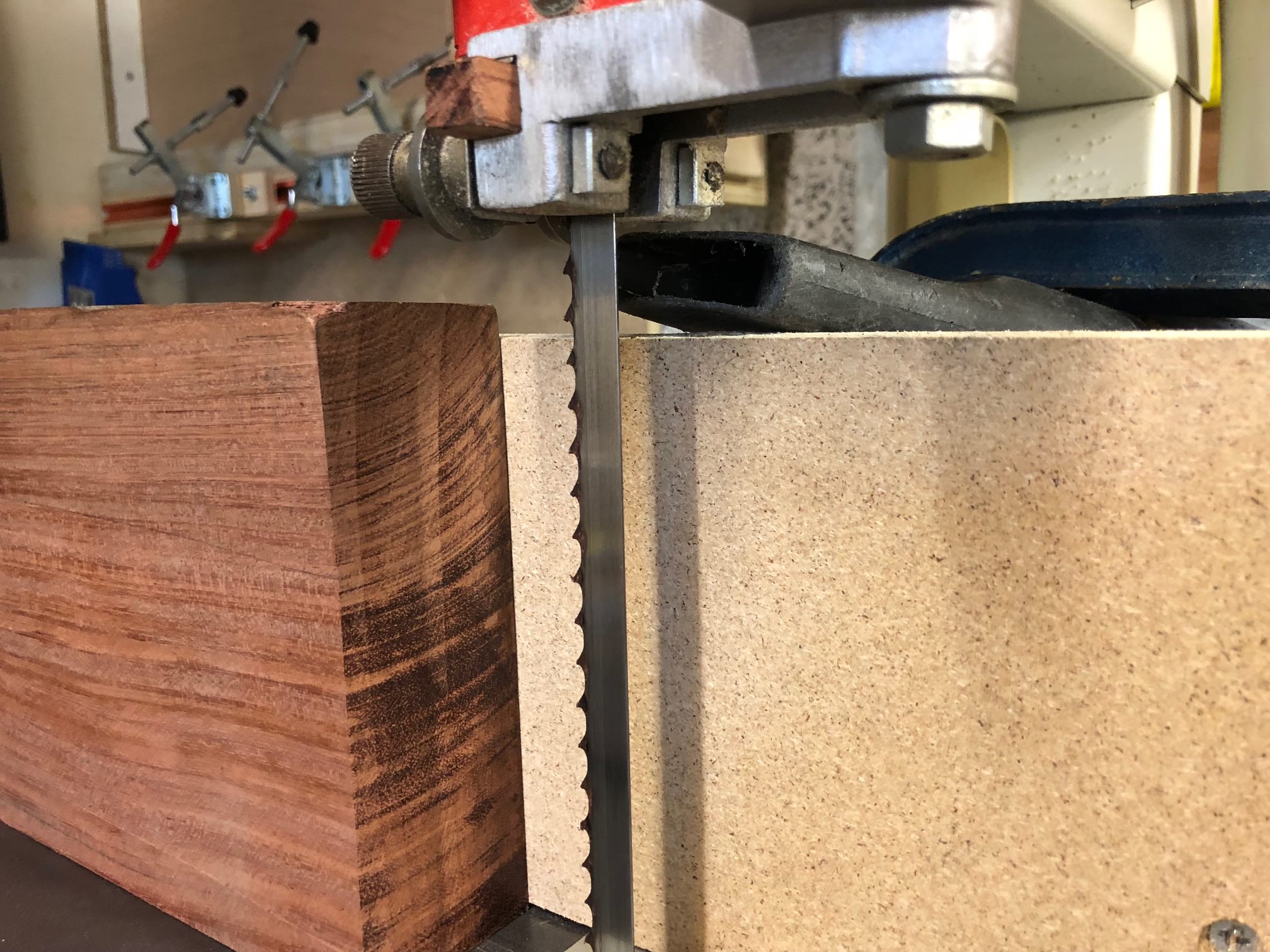I was resawing a 7" wide slab of Bubinga on a bandsaw.
Afterwards the blade teeth were covered in like almost sticky gunk...

The blade is an older one (one that came with my second hand machine, a Tuffsaws replacement is on its way), 3 or 4 TPI, but it cut through it easy enough and left a relatively clean finish.
I had the main dust extraction going and an additional one clamped to the fence near the guides so I don't think dust extraction was an issue.
First time I've used bubinga, is that typical to leave a mess on a blade? Is it a mucky/oily (whatever the correct term is!) wood?
Afterwards the blade teeth were covered in like almost sticky gunk...

The blade is an older one (one that came with my second hand machine, a Tuffsaws replacement is on its way), 3 or 4 TPI, but it cut through it easy enough and left a relatively clean finish.
I had the main dust extraction going and an additional one clamped to the fence near the guides so I don't think dust extraction was an issue.
First time I've used bubinga, is that typical to leave a mess on a blade? Is it a mucky/oily (whatever the correct term is!) wood?





































